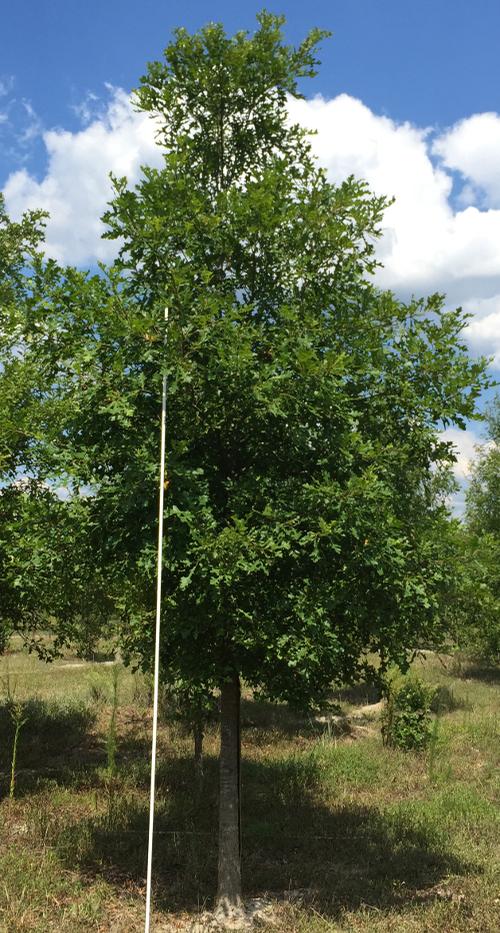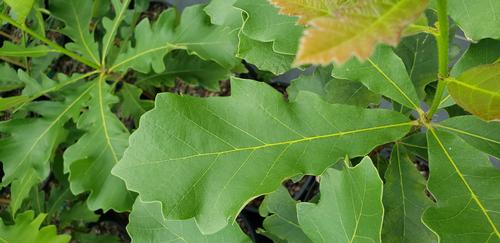



Quercus lyrata
Overcup Oak
Overcup oak gets its common name from the big bur-like cup that covers 2/3 of the acorn. The cup makes it float in flooded areas. Fall color may be rich yellow-brown or red. Leaves drop earlier than other oaks. The branching is very uniform and branches are upswept so pruning lower branches may not be necessary. Good choice for difficult sites.
Acorns are eaten by woodpeckers, wild turkey, other birds, as well as small and larg mammals. Male catkins produce pollen. The trees provide nest sites for birds and pollen for pollinators.
- Native shade tree
- Pyramidal to rounded habit
- Sturdy tree for poor soils
- Category: Tree, Native
- Hardiness Zone: 5-9
- Height: 50-60 ft
- Spread: 35-40 ft
- Foliage Color: Dark Green
Growing & Maintenance Tips for Quercus lyrata
Grows naturally in bottomlands with moist to wet soil and tolerates flooding. However, Overcup Oak grows well on sites with better drainage and soil texture. Easier to transplant than White Oak.
